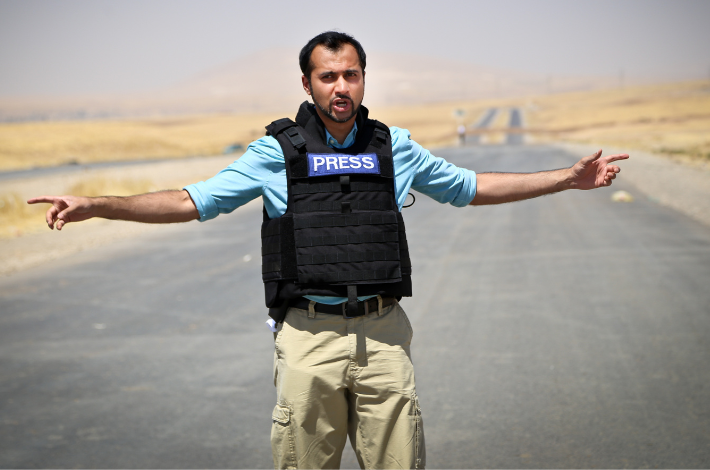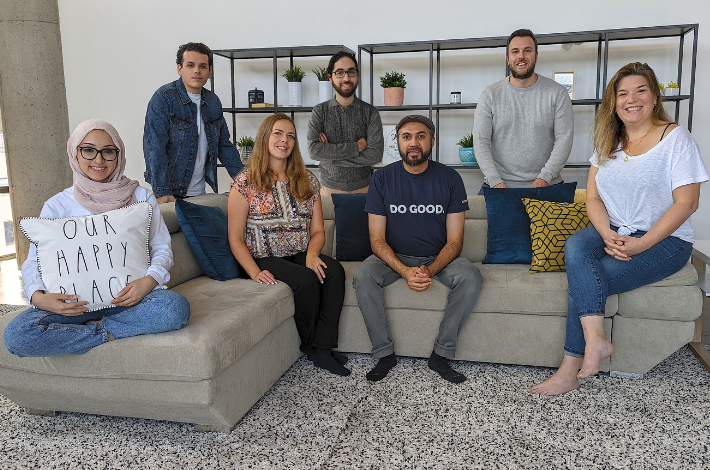A few years ago, after covering war zones for years, I had a eureka moment. It happened with the barrel of an AK-47 pointed at my head. The danger was no big deal, it’s happened before. In Egypt. In Ukraine. In Afghanistan. At multiple points in my life, the Taliban, Russians, ISIS, and Egyptians have all tried to kill me (in fairness, I think the Egyptians just wanted to rough me up, but you never know when machetes are involved). I woke up the next morning with a burning question:
Why does the news only cover bad things?

If you’re reading this then I’m already preaching to the choir, but our newsfeeds have been dominated by negativity for far too long, whether it’s earthquakes, floods, or school shootings. The effect it has on our brains is disastrous. Ninety percent of the news is negative. It’s no accident that 41% of the world right now is struggling with some sort of mental health issue.
The news is literally killing us.
Ironically, the data shows that audiences are hungry for the opposite. Over and over again, I saw that our internal metrics showed positive content would generate 4.5x the engagement as ordinary news. So why wasn’t anyone capitalizing on it?
Armed with a fierce ambition to make the world better, I started using my own social media to showcase good things in the world. I took a risk on something I knew the world needed, with no idea what to expect. At CNN, I had a personal reach of around 200,000 impressions per month on my own social media. Within a year of shifting to only good news, I’d grown to around 4,000,000/month. This year, with a small team, we’ve surpassed more than 100M+ impressions in a single month. It’s an incredible feat for a company that is only a year and a half old. Our content (news and/or videos) are broadcast in 40,000 physical locations across North America, including the Empire State Building, 30 Rockefeller Center, and more.
So, where'd it start?
It wasn’t always like that. In the early days, I made every mistake you can imagine. I tried raising too early, didn’t understand what investors look for, or how to create value for customers. Two things happened that completely changed Goodable’s trajectory.
First, I got into On Deck. If you don’t know, it’s like a Y-Combinator accelerator that puts you into a community of founders and gives you the tools you need to succeed. I instantly had access to brilliant people that I learned from – everything from how to structure a cap table, to crafting pitch decks, to building smart, insightful revenue projections and a GTM strategy. I treated it like a full-time job.
The second was fundraising. It started with Samantha. Fundraising can be hard – even more so if you’re not from Stanford or part of the tech bubble. Samantha was the first person to believe in us. I texted her in late 2020 with a simple ask:
Me: “Hey Samantha, are you comfortable being the first money in?”
Her: “I would be honored.”
She wired us a check within 24 hours. Today, if you go based on our cap, she’s already 10x’d her investment. We used the money to build a prototype, a tech stack, and an MVP. Soon, other dominoes began to fall. Other investors started hearing about our mission and wanted to meet. Some of them committed as soon as they heard me describe what Goodable would look like. They did it because they knew the world needed Goodable, and they wanted to help make it happen.
Today, we have a team of nine, a historic studio space, multiple revenue partnerships (they’re small but growing), and a powerful machine learning model that nobody has built before.

All of this doesn’t necessarily mean Goodable will be successful. Like everything in life, we still have to put in the hard work - and ride the roller coaster of emotions that comes along with it. But it does prove something even more valuable: That good things happen to those who put good into the world. That’s been our guiding principle at Goodable from Day One, and we don’t plan to stop.
